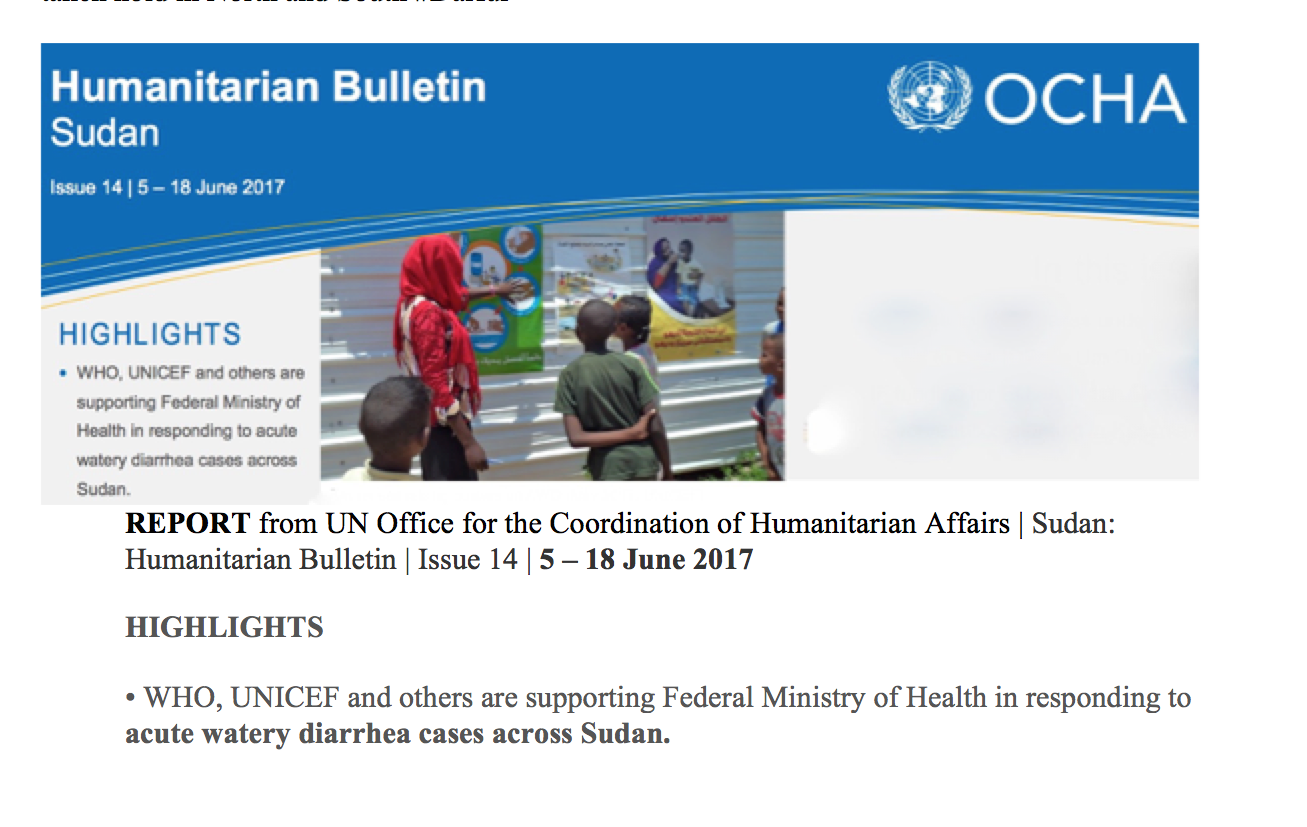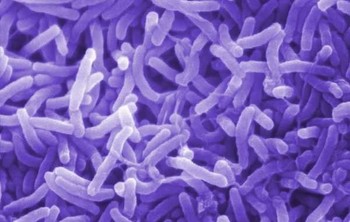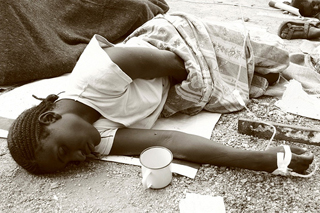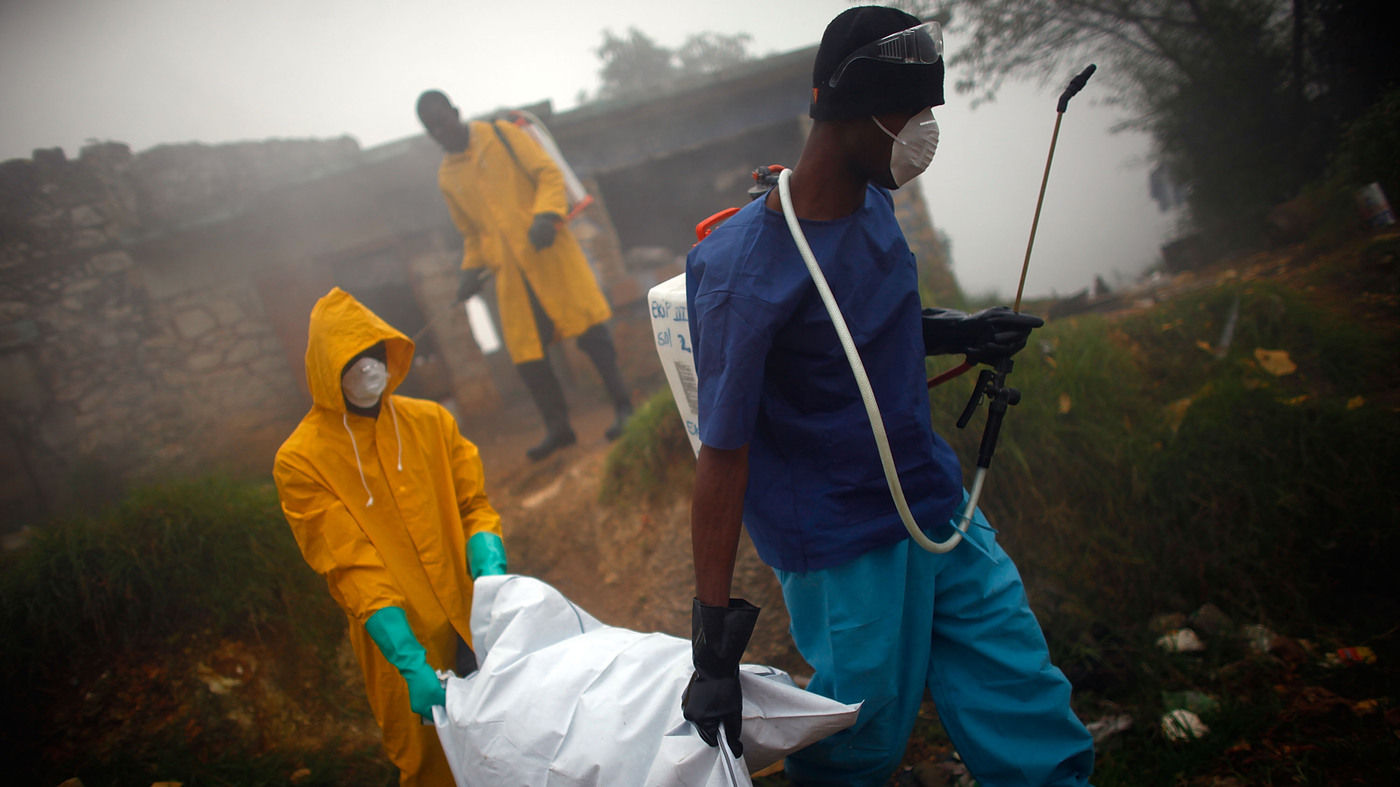Cholera Epidemic in Sudan Now Reaches Darfur: As the rainy season begins in earnest, the implications are terrifying
Eric Reeves | June 25, 2017 / http://wp.me/p45rOG-24B
What we know from previous reporting about cholera in Sudan and the country’s collapsing medical system:
“The collapse of the health services in the country requires intervention by international organisations to help eradicating the epidemic, and that can only be done if the government officially declares the cholera outbreak,” Sarah Abdeljaleel, Media Secretary of the Sudanese Doctors’ Union in the United Kingdom and Ireland told Radio Dabanga last week. (Radio Dabanga, June 25, 2017)
Disgracefully, the UN’s Office for the Coordination of Humanitarian Affairs in Sudan (OCHA) has yielded to the Khartoum regime and refuses to use the word “cholera,” even as laboratory tests have confirmed the presence of the bacterium Vibrio cholerae; the disease has also been confirmed by independent health officials (see below):
The same is true of the UN’s World Health Organization (WHO):
As these are the first reports of cholera infections in Shangil Tobaya, the World Health Organization (WHO) has not yet issued an update… The WHO and the Sudanese Ministry of Health do not refer to the disease as cholera, but the less severe “acute watery diarrhoea (AWD).”
WHO has not replied to Radio Dabanga’s latest request to comment on the spread of cholera. (Radio Dabanga, June, 23, 2017)
The UN is content to ignore what was reported by Radio Dabanga in January of this year:
Medics: “Cholera spreading in Sudan” | Radio Dabanga | January 22, 2017 | KHARTOUM | https://www.dabangasudan.org/en/all-news/article/medics-cholera-spreading-in-sudan
According to laboratory results, the diarrhoea cases spreading over various parts of Sudan since September last year are caused by cholera. The Central Committee of Sudanese Doctors reported 53 such cases in Red Sea and El Gezira states on Friday.
Dr Mohamed Naji El Asam, Member of the Doctors’ Executive Committee, told Radio Dabanga in an interview broadcast on Friday that the results of laboratory tests on acute diarrhoea samples conducted in the Ahmed Gasim Hospital in Khartoum proved that it was cholera.
The doctor criticised the federal Ministry of Health for keeping silent about the disease in spite of the confirmation by laboratories.
Cholera bacteria under a microscope
Sudan Tribune also reported in January 2017 that the epidemic in Sudan was cholera:
Eight dead in suspected Sudan cholera outbreak: report | Sudan Tribune | January 16, 2017 (KHARTOUM) | http://www.sudantribune.com/spip.php?iframe&page=imprimable&id_article=61409
Eight people have died and 342 infected at several Sudanese states in a second wave of a suspected cholera outbreak within five months, said a report by the independent Central Committee of Sudanese Doctors. The report, which was seen by Sudan Tribune on Monday, said the preliminary tests of diarrhea samples proved they were cholera cases, pointing such cases are usually confirmed by a reference laboratory and announced by the Department of Epidemiology at the Health Ministry.
It pointed that a number of cases have been reported in Khartoum, Gazeera and Red Sea states, saying “such cases must be handled with utmost seriousness to ensure the safety of patients and curtail the spread of the epidemic.” The report demanded the authorities to apply the scientific universal measures in dealing with such cases and announce the results with full transparency, saying the disease is highly contagious.
Indeed, the warnings had come early and often, and yet no action was taken by Sudan or the UN’s humanitarian agencies. The Khartoum regime still refuses to call the rapidly spreading epidemic cholera, and UN agencies defer to Khartoum. The results of this policy of denial and acquiescence are now terrifyingly clear:
“Three die of cholera in South Darfur’s Kalma camp” | Radio Dabanga, June 25, 2017 | KALMA / SHANGIL TOBAYA / EL TADAMON / BLUE NILE / KHARTOUM https://www.dabangasudan.org/en/all-news/article/three-die-of-cholera-in-south-darfur-s-kalma-camp
On Friday, three residents of Kalma camp for the displaced near Nyala, capital of South Darfur died of cholera. With the spread of cholera to South Darfur, 14 Sudanese states are now affected. Hussein Abusharati told Radio Dabanga that three other Kalma camp residents are infected as well.
“The South Darfur health authorities and staff of health organisations working in the state rushed to the camp, and allocated two emergency sites in the camp to receive the patients,” he said. “The organisations directed us to immediately report any suspected cases.” Kalma, hosting more than 120,000 displaced, is one of the largest camps in Darfur.
In the Naivasha camp for the displaced near Shangil Tobaya in North Darfur’s Tawila locality, a girl died on Friday. “This brings the number of cholera deaths to 12 in a week,” a Naivasha camp elder reported to this station. “With eight new cases last week, 96 camp residents are being treated for the disease.” The elder complained about the poor health care in the makeshift isolation centre, the overcrowded ward, and the lack of medical staff in the camp clinic.
He said they have called on the North Darfur health authorities to urgently provide adequate treatment and medical staff, and to organise awareness campaigns about the importance of hygiene and sanitation.
“Watery diarrhoea”
The health unit in the area of Um El Kheirat area in South Kordofan’s El Tadamon locality received two new cases of cholera on Friday. The head of the unit reported that two older cases are still being treated.
The Blue Nile state Minister of Health, Abdelrahman Bilal, reported last week that at least 40 people in the state are suffering from “acute watery diarrhoea.” The first cases were recorded in Blue Nile state in August last year. The federal Health Ministry initially neglected the reports. A few months later, after the disease spread to neighbouring states, medical doctors began to mention cholera.
Sudan’s security authorities, however, refused to call the disease by its real name and instead continue to refer to it as “watery diarrhoea.” On 1 June, the Sudanese Minister of Health reported to the federal parliament that between August 2016 and May 2017, 14,659 people were infected with “watery diarrhoea.” 292 patients died.
The UN Office for the coordination of Humanitarian Affairs (OCHA) in Sudan reported it its bulletin of 5-18 June that according to the federal Ministry of Health and the World Health Organization, about 16,600 suspected cases of “Acute Watery Diarrhoea” were reported in the country, including 317 deaths.
Health management
“The collapse of the health services in the country requires intervention by international organisations to help eradicating the epidemic, and that can only be done if the government officially declares the cholera outbreak,” Sarah Abdeljaleel, Media Secretary of the Sudanese Doctors’ Union in the United Kingdom and Ireland told Radio Dabanga last week. This week, Sudanese university professors have appealed to the federal cabinet and parliament to restore “the former health management mechanism” in Sudan. In a press statement, they pointed to the nation’s “successful experience in managing the health system before the federal system came into being.” They further urged the revision of the Constitution and laws governing the health system in the country.
Cholera victim (Zimbabwe)
“Cholera cases in North Darfur, Khartoum, eastern Sudan,” Radio Dabanga, June 23, 2017 | SHANGIL TOBAYA / KHARTOUM / KOSTI / DELLING | https://www.dabangasudan.org/en/all-news/article/cholera-cases-in-north-darfur-khartoum-eastern-sudan
The spread of cholera to North Darfur claimed the lives of two displaced women in a camp in Shangil Tobaya on Thursday, while the isolation centre has recorded approximately 100 cases of infection.
Abdallah Rashid reported the death of the two displaced women while the centre recorded eighteen new infection cases. Speaking to Radio Dabanga, Rasheed, former director of Nahar Medical and Health Organisation that is active in the area, said that the isolation centre is overcrowded. “This led the management of the centre to put the beds of patients in the courtyard and the corridors of the centre.
“A number of patients are sleeping on the land because of the lack of adequate beds.” Rasheed added that there is a one toilet in the centre, used by patients, attendants and doctors.
“Residents of the district near the isolation centre are concerned about the spread of cholera, saying there are no adequate prevention measures at the centre.” This week, the Sudanese Ministry of Health sent a team to establish a camp isolation centre and prevented the displaced people from leaving and entering Naivasha camp.
As these are the first reports of cholera infections in Shangil Tobaya, the World Health Organization (WHO) has not yet issued an update about its response to the disease in the Sudanese humanitarian news bulletin by UN OCHA. The WHO and the Sudanese Ministry of Health do not refer to the disease as cholera, but the less severe “acute watery diarrhoea (AWD).” WHO has not replied to Radio Dabanga’s latest request to comment on the spread of cholera.
Stagnant water in Khartoum
In Khartoum’s Imtidad El Daraja El Talta district, the hospital recorded one death of a cholera patient, and four new infections on Wednesday. Activist Nader El Sayed attributed the cholera outbreak to the accumulation of garbage and the stagnant water in the area. “This might increase if no protection and prevention measures are taken.”
At El Noua Hospital in Omdurman, a medical source reported to this station that during the past week four people have died and nine others have been infected with cholera. This in addition to the eleven cases of cholera that were reported at Omdurman Hospital.
One person died while four new people suffering from cholera were recorded at the isolation centre of the Eye Hospital in Kosti in White Nile state on Wednesday and Thursday. While the number of hospitalised cases is 23 people, medical sources confirmed the lack of the recording of new infections in the isolation centre at El Marabee in El Gezira Aba: only two cases have been registered in the centre.
South Kordofan allows food trade
In South Kordofan, one person died and some 20 others were infected with cholera at El Farshaya area, north of Delling, this week. The hospitalised cases ran-up to 19 people.
The authorities in Delling have put a halt on the precautionary measures that were taken three weeks ago in order to prevent the spread of cholera. They allowed the re-opening of the butcheries and the entry of vegetables into the city from Thursday morning onwards.
In River Nile state, State Minister of Health El Amin Mahmoud El Nus said that the total number of infected cases amounted to 264 cases, including four deaths. He said that 26 isolation centres have been established in the state.
Cholera victims in Haiti—a foreshadowing of Darfur’s fate during the present rainy season
Other Recent Reporting on Cholera:
“Cholera kills eight in two days across Sudan” |Radio Dabanga, June 22, 2017 | KHARTOUM / WHITE NILE / KORDOFAN | https://www.dabangasudan.org/en/all-news/article/cholera-kills-eight-in-two-days-across-sudan
Eight people have reportedly died and 231 others infected with cholera in Sudan’s Khartoum, White Nile, South Kordofan, and North Kordofan states on Monday and Tuesday.
Dr Ali Bashir, the spokesman for the National Epidemiology Corporation told Radio Dabanga that in Khartoum three people died at Bashayer hospital while three more died at El Sheikh El Bashir village in Jebel Awliya in southern Khartoum state.
“Cholera continues to spread along the Nile” | Radio Dabanga, June 21, 2017 | SUDAN | https://www.dabangasudan.org/en/all-news/article/cholera-continues-to-spread-along-the-nile
Sudan’s cholera outbreak has expanded to include new areas in Kassala and El Gedaref states. Four people have died and more than 80 have been infected with cholera in New Halfa locality in Kassala state this week. On Monday, a health source told Radio Dabanga that the infections have spread to the districts of El Sawra, Kambo, Village 33 Abunajma, and Village 18 Arab. The source explained the continuous increase in the incidence of cholera and spread in various villages and districts of New Halfa. Four people died in El Gedaref state on Monday, while dozens were infected in El Fashaga and Galaa Elnaha. Sources said that Umsagta area in Galaa Elnahal locality recorded two cases and Umgargoura in El Fashaga locality recorded two deaths.
“Cholera now endemic in Sudan’s El Gedaref”: former Minister | Radio Dabanga, June 15, 2017 | EL GEDAREF / WHITE NILE / KHARTOUM | https://www.dabangasudan.org/en/all-news/article/cholera-now-endemic-in-sudan-s-el-gedaref-former-minister
The former Minister of Health of El Gedaref, Mustafa El Sayed, told Radio Dabanga that cholera has become one of the endemic diseases in El Gedaref. Cases of cholera infection in five of El Gedaref state’s localities are estimated at 395, while 10 cholera sufferers have died in Um Gargoura. Yesterday a medical source told Radio Dabanga that 250 cases were registered in the town of El Gedaref. The medic said that the cholera epidemic has spread to El Saraf El Ahmar in the localities of El Gallabat East, El Rahd, and El Butana. The doctor appealed for a medical emergency to be declared in El Gedaref state.
Early Reporting on the cholera epidemic:
“Calls for schools to close as ‘cholera’ fears grip eastern Sudan” | Radio Dabanga, January 25, 2017 | EASTERN SUDAN |
More die of diarrhoea in eastern Sudan | December 30, 2016 | PORT SUDAN / WAD MADANI
Death toll from diarrhoea in Sudan’s El Gezira ‘16 and rising’ | Radio Dabanga, December 29, 2016 | WAD MADANI
Ten people die of acute diarrhoea in Sudan’s El Gezira | Radio Dabanga, December 27, 2016 | WAD MADANI
More students stricken with diarrhoea in Sudan | Radio Dabanga, December 22, 2016 | WAD MADANI
Diarrhoea kills two Sudanese students | Radio Dabanga, December 15, 2016 | WAD MEDANI
‘Over 2,600 cases of watery diarrhoea in Sudan’: Health Ministry | Radio Dabanga, September 25, 2016 | KHARTOUM
Number of diarrhoeal disease cases growing in Sudan | Radio Dabanga | September 19 – 2016 ED DAMAZIN, EL GEZIRA, SENNAR
Analysis:
“What the cholera epidemic tells about the absurdity of lifting sanctions on Sudan,” Sudan Tribune, January 27, 2017 | http://www.sudantribune.com/spip.php?iframe&page=imprimable&id_article=61489
By Eric Reeves
Former Obama administration UN Ambassador Samantha Power’s claim that there has been a “sea change” of improvement in humanitarian access in Sudan was not only false, but destructively so. As a justification for Obama’s Executive Order lifting U.S sanctions on the National Islamic Front/National Congress Party regime, her promulgation of false information gives the regime reason to believe that even token moves to improve humanitarian access will be credited as sufficient, especially under the new Trump administration. Such an attitude on the part of the regime could easily translate into the loss of tens of thousands of Sudanese lives.
One example looms large at present.
There can be little doubt now that the steady stream of reports concerning cases of acute watery diarrhea signal a widespread outbreak of cholera—an extremely dangerous but easily treated disease that is the product of contaminated water sources. Today’s report from Sudan Tribune confirms not only that there have been two waves of cholera in various northern states, including Blue Nile, extending back to at least September 2016), but that regime officials have tried to deny that the disease causing so many deaths and hospitalizations is cholera. The Sudan Tribune dispatch is based on a report by the independent Central Committee of Sudanese Doctors (CCSD), which found that “twelve people have died and 500 infected with watery diarrhea in the states of Khartoum, Red Sea and Gedaref during last week”; the CCSD “accuses health authorities in the states of concealing and covering-up the lab results of samples taken from the patients, describing this behavior as ‘irresponsible and reckless.’”



